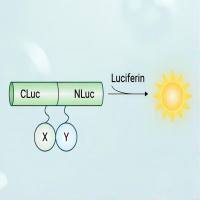In Vivo Imaging of Leukocyte Recruitment to Glomeruli in Mice Using Intravital Microscopy
互联网
互联网
相关产品推荐

InVivoMAb 抗小鼠 CD274/PD-L1/B7-H1 Antibody (10F.9G2),InVivo体内功能抗体(In Vivo)
¥2700

Recombinant-Bovine-E-selectinSELEE-selectin Alternative name(s): CD62 antigen-like family member E Endothelial leukocyte adhesion molecule 1; ELAM-1 Leukocyte-endothelial cell adhesion molecule 2; LECAM2 CD_antigen= CD62E
¥12894

///蛋白/P-Mice-Ins-betundefined NaTx5.4蛋白/Recombinant Tityus bahiensis Toxin Tb2-II重组蛋白
¥69

荧火素酶互补实验(Luciferase Complementation Assay, LCA)| 荧光素酶互补成像技术(Luciferase Complementation Imaging, LCI)
¥5999

Sperm in vivo staining solution (eosin-aniline black method)(S0054)-10ml
¥260
相关问答

